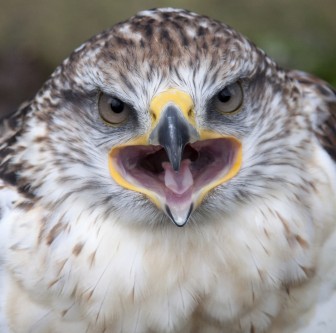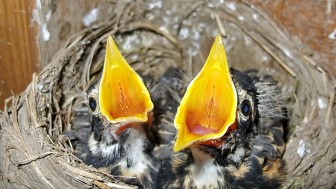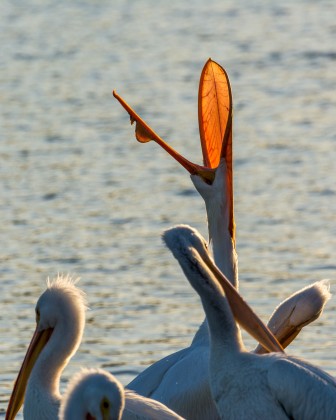Bird Term: Gape
How the Gape of a Bird's Beak Influences Its Life

Ferruginous Hawk by Tony Hisgett (CC BY 2.0)
The gape of a bird's beak might not be the first thing that comes to mind when thinking about our feathered friends, but it’s an incredibly important feature that plays a vital role in their survival. Let's delve into what the gape is, why it matters, and some fascinating examples from the bird world.
The gape is the opening of a bird’s mouth, including the width and the angle when the beak is open. It's not just about how wide a bird can open its beak, but also how it uses this ability. The gape is particularly crucial for feeding, both in terms of what a bird can eat and how it feeds its young. The size and shape of the gape can give us insights into a bird’s diet and its feeding behavior.
For many songbirds, especially those that feed their young in the nest, the gape is a bright, colorful target. Nestlings often have brightly colored gapes, which serve as a visual cue for parents to know where to place food. This ensures the food goes directly into the chick’s mouth and not somewhere else. The vibrant colors can range from yellow to red, and this is especially prominent in species where the nest is dark and hard to see.

American Robin chicks by Mark Turnauckas (CC BY 2.0)
The gape also plays a significant role in the feeding strategies of various bird species. For instance, flycatchers, with their wide gapes, are adept at catching insects on the wing. Their beaks may appear short and stubby, but when they open wide, they can catch a considerable number of flying insects. This adaptation is crucial for their survival, as their diet consists mainly of airborne insects.
Another interesting example is the Common Nighthawk, which has a very wide gape, allowing it to scoop up insects while flying with its mouth open. This behavior, known as "aerial feeding," is made possible by the bird's ability to open its beak exceptionally wide, creating a larger target area for catching prey.
Pelicans have one of the most impressive gapes in the bird world. Their beak can open wide enough to catch fish and even hold large quantities of water, which they then drain out before swallowing their catch. The gape of a pelican’s beak is not only wide but also flexible, allowing it to expand to accommodate large prey.

American White Pelican by Don DeBold (CC BY 2.0)
Gape size can also influence a bird's song. In many songbirds, the muscles controlling the gape are highly developed and allow for a wide range of vocalizations. This ability to produce varied and complex sounds is crucial for communication, especially during mating season when males are trying to attract females with their songs.
Hummingbirds, with their narrow, elongated beaks, might not seem like they have much of a gape, but they do. Their beaks can open wider than you might expect, allowing them to catch small insects, which are an important protein source in their diet. This capability shows that even birds with specialized beaks for feeding on nectar can have a significant gape when needed.
The gape of a bird’s beak is a fascinating and important aspect of avian biology. It influences feeding habits, parental care, communication, and survival strategies. Whether it’s the bright, colorful gapes of nestlings, the wide-mouthed aerial feeders, or the specialized adaptations of pelicans and hummingbirds, the gape is a key feature that helps birds thrive in their environments.





Comments
Leave a comment
Thank you!